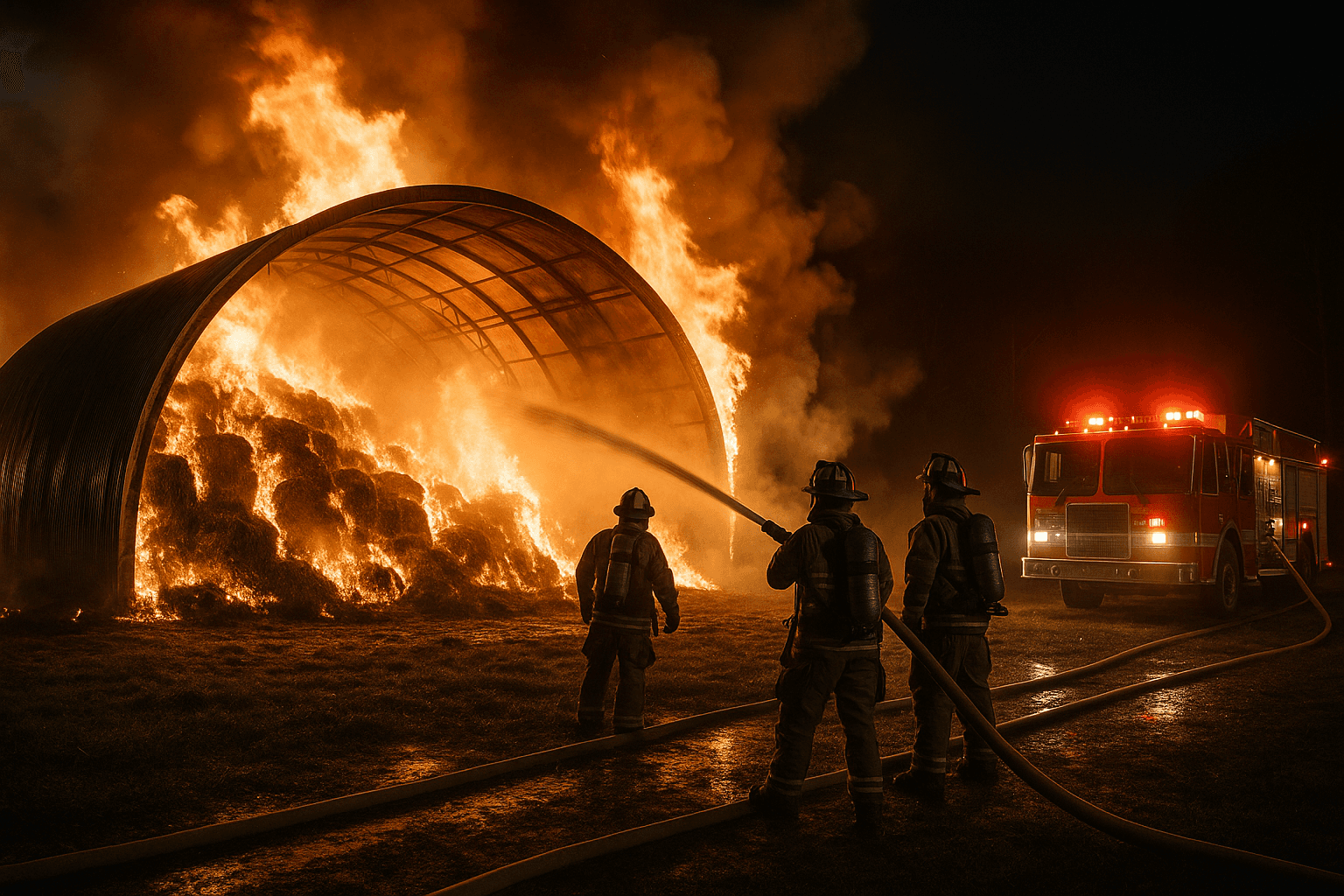Large Snow Camp Hay Barn Fire Raises Questions About Rural Fire Safety
A hay barn on the 9100 block of Sylvan Road in Snow Camp caught fire on November 25, 2025, drawing a large response from Snow Camp Fire Department and mutual aid departments. The Alamance County Fire Marshal attributed the blaze to heat generated by decomposing organic material, and the incident highlights safety and resource issues for rural emergency response and agricultural storage practices.

Firefighters responded Monday night to a fully involved hay barn blaze in the Snow Camp area of Alamance County. Crews located the barn burning on the 9100 block of Sylvan Road and called in multiple departments to contain the fire. The Alamance County Fire Marshal's Office said the likely cause was heat generated by decomposing organic material in stored hay. No injuries were reported.
Snow Camp Fire Department personnel worked alongside mutual aid departments to bring the fire under control. Firefighters described the nature of the materials and the intensity of the blaze as reasons for the expanded response, and neighbors assisted the farmer with recovery efforts on site. The station returned the following day to help property owners with recovery and to ensure the fire was fully extinguished.
The episode underscores operational realities for rural fire services. Stored hay can produce significant internal heat as it decomposes, creating a known ignition risk when moisture and packing conditions allow. Because initial smoke or smoldering may be concealed inside bales, response requires careful assessment and manpower. The quick mobilization of multiple departments in this event illustrates the practical importance of mutual aid agreements and volunteer capacity in Alamance County.

There are policy implications for local officials and residents. Decisions about county budgets and resource allocations influence staffing, equipment, and training for volunteer and municipal fire departments. Outreach and education about safe hay storage and regular monitoring of stored agricultural products could reduce future incidents. The Fire Marshal's involvement in determining the cause points to the role of county oversight in both investigation and prevention.
For residents, the immediate impact was limited to property loss and recovery work, with no reported injuries. Longer term, the incident serves as a reminder for farmers and property owners to review storage practices and for the community to support local emergency services through engagement in budget discussions and community safety programs. County officials responsible for emergency services and agricultural extension can use this case as a focal point for reviewing prevention measures and preparedness across rural parts of Alamance County.


